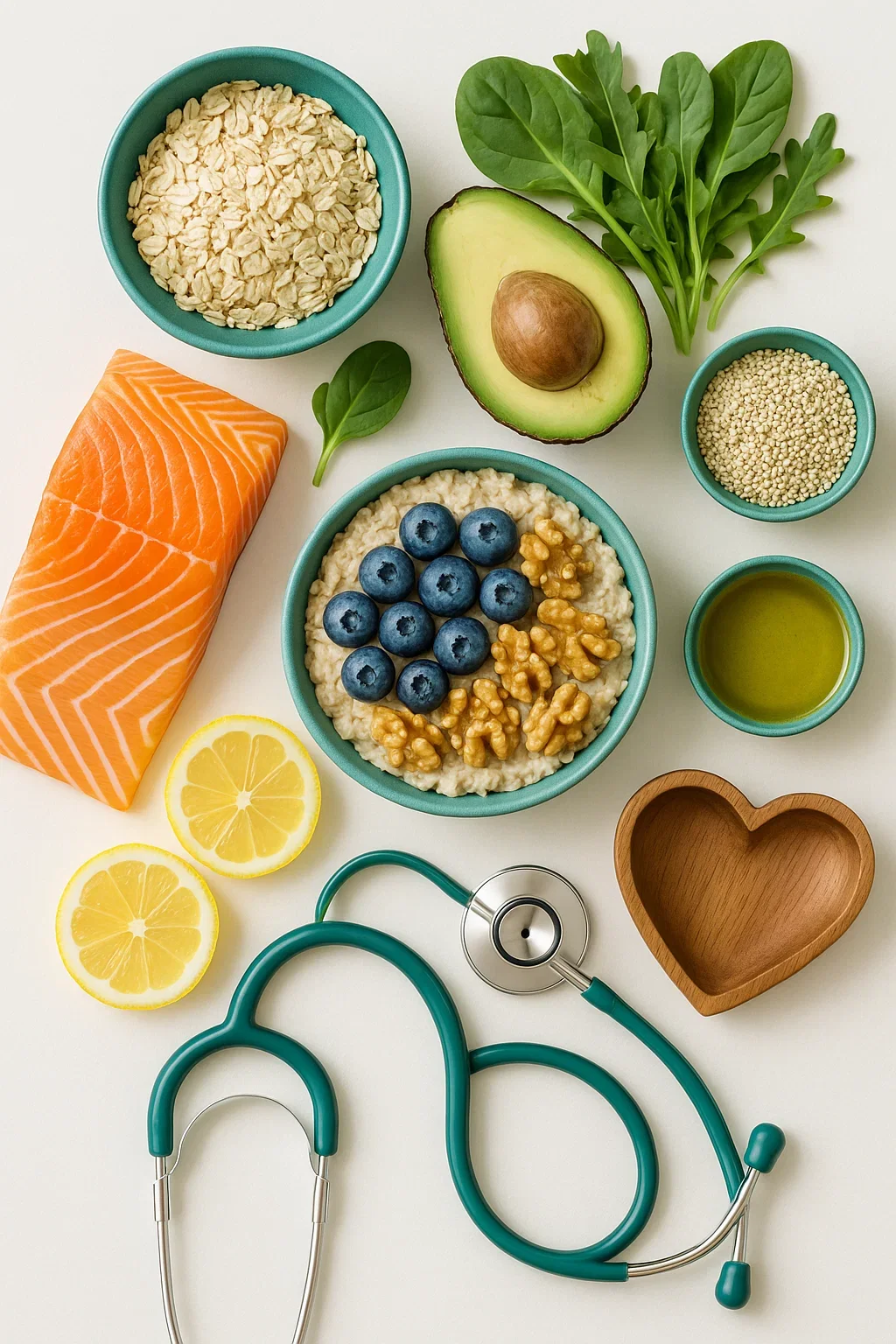Written By: Adiana Castro MS, RDN, CDN, CLT
Cholesterol plays a vital role in your body — it helps make hormones, build cells, and support digestion. But when levels get too high, it can silently increase your risk for heart attack, stroke, and other heart-related conditions. Because you can’t feel high cholesterol, the only way to know your levels is through a simple blood test.
What Is Cholesterol?
Cholesterol is a waxy, fat-like substance made mostly by your liver, though some also comes from the foods you eat. Your body needs it to function properly, but balance is key — too much can cause buildup in your arteries, leading to plaque formation and restricted blood flow.
The Different Types of Cholesterol
LDL (Low-Density Lipoprotein): Known as “bad cholesterol,” LDL carries cholesterol to your arteries. Too much can build up and form plaque.
HDL (High-Density Lipoprotein): Known as “good cholesterol,” HDL helps remove cholesterol from your arteries and return it to your liver.
Triglycerides: Another type of fat found in your blood. High levels — especially when combined with high LDL or low HDL — can raise your heart disease risk.
Healthy blood test targets:
Total cholesterol: Less than 200 mg/dL
LDL cholesterol: Less than 100 mg/dL
HDL cholesterol: 60 mg/dL or higher
Triglycerides: Less than 150 mg/dL
A Deeper Look: ApoB, Lp(a), and LDL Particle Size
Sometimes, standard cholesterol numbers don’t tell the whole story. Advanced tests can reveal more about your heart health.
ApoB
Apolipoprotein B (ApoB) measures the total number of cholesterol-carrying particles that may cause plaque buildup.
High ApoB levels indicate more risk — even if your LDL looks normal. Doctors may recommend this test if you have a family history of heart disease or diabetes.
Lp(a)
Lipoprotein(a) is a genetic type of LDL particle with an extra protein attached. It’s largely unaffected by diet or exercise. High levels can increase inflammation and damage blood vessels, raising the risk for heart attack and stroke.
LDL Particle Size
Not all LDL is equal.
Small, dense LDL particles are more dangerous and more likely to cause blockages.
Large, fluffy LDL particles are less harmful.
An NMR lipid panel can show your LDL particle size — especially useful if your basic numbers seem fine but you still have heart risks.
Nutrition Strategies to Lower Cholesterol
You don’t need a restrictive diet to improve your cholesterol — small, consistent changes make the biggest impact.
Eat More:
High-fiber foods: Oats, barley, apples, pears, beans, and lentils help reduce cholesterol absorption.
Healthy fats: Avocados, olive oil, nuts, and fatty fish like salmon support heart health.
Plant-based proteins: Beans, lentils, soy products, and whole grains can lower LDL naturally.
Smart snacks: Try popcorn (air-popped), carrot sticks with hummus, or unsalted nuts instead of chips or candy.
Limit:
Saturated fats: Found in fatty meats, butter, and full-fat dairy.
Trans fats: Often in packaged baked goods and fried foods.
Added sugars and refined carbs: Found in soda, candy, white bread, and sweet cereals.
Lifestyle Habits for Heart Health
Beyond nutrition, your daily choices matter.
Be active: Aim for at least 30 minutes of movement each day — walking, swimming, dancing, or biking all count.
Maintain a healthy weight: Even modest weight loss can help improve cholesterol levels.
Quit smoking: Stopping can raise your HDL and protect your heart.
Limit alcohol: Stick to one drink per day for women, two for men.
Sleep well: Get 7–9 hours nightly to support healthy cholesterol and reduce inflammation.
Manage stress: Chronic stress can raise blood pressure and make it harder to maintain healthy habits.
Heart-Healthy Recipes to Try
Blueberry Walnut Overnight Oats
A simple breakfast rich in fiber and omega-3s.
Mix oats, Greek yogurt, almond milk, chia seeds, maple syrup, vanilla, lemon zest, and spices. Refrigerate overnight, then top with blueberries and crushed walnuts.
Black Bean & Quinoa Salad
A protein-packed, plant-based lunch.
Combine cooked quinoa, black beans, corn, red bell pepper, scallions, and cilantro. Toss with lime juice, olive oil, and cumin for a bright, refreshing salad.
Avocado Lime Salmon
A flavorful, omega-3–rich dinner.
Bake salmon with garlic, olive oil, and paprika. Top with a simple mix of chopped avocado, onion, cilantro, lime juice, and olive oil.
Lentil Walnut Stuffed Peppers
A hearty, vegetarian dinner full of fiber and healthy fats.
Bake bell peppers, then fill with sautéed mushrooms, spinach, onions, lentils, and walnuts — seasoned with soy sauce, basil, and spices.
Takeaway
Managing cholesterol is about balance — not restriction. Focus on nourishing foods, daily movement, stress management, and regular check-ins with your healthcare provider.
Small changes done consistently can make a powerful difference in your heart health.
Ready to take control of your cholesterol?
We can help you create a personalized plan to lower cholesterol naturally and protect your heart health.
👉 Book Your Appointment Here

